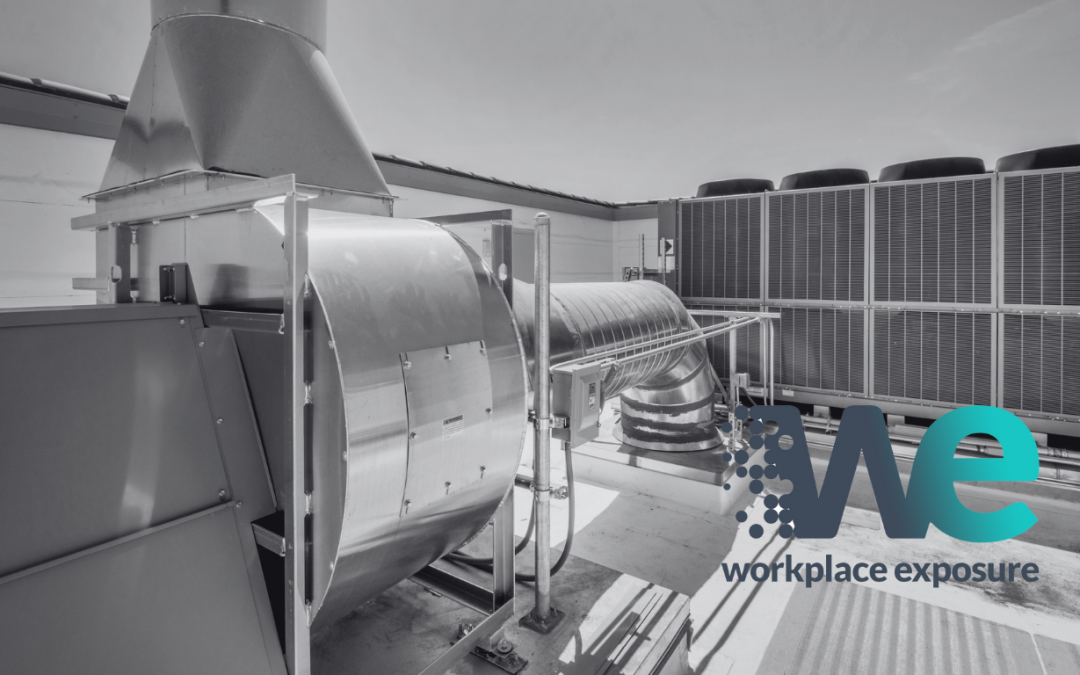A Guide to Local Exhaust Ventilation (LEV) Testing
Annually, workers around the world contract occupational lung diseases and disorders such as Asthma and Chronic Obstructive Pulmonary Disease (COPD) as a result of overexposure to hazardous substances.
It is essential to put into place effective control measures, such as Local Exhaust Ventilation (LEV), to help reduce employee exposure to airborne contaminants and workplace related illnesses.
By understanding what hazards need to be controlled and how to do so, exposure levels can be successfully regulated. In this guide, we will explain what is included in the LEV testing process and how to maintain these systems to ensure that workers and the public are kept safe from harmful substances.

What Is Local Exhaust Ventilation?
Capturing hazardous substances at the emission point, LEV is an engineering system that protects employers and employees from harmful exposure to the likes of fumes and dust. This method is only one of many control options available to workplaces to help remove airborne contaminants.
Most systems have the five main components which make up the LEV, including the enclosure, ducting, air filters, air mover and exhaust. All of these elements play integral roles into providing clean and safe air for those within the working environment.
However, it is important to note that the air filter is not essential for all LEV systems.
All LEV systems should be well designed and thoroughly thought out to ensure it is fit for purpose. Poor design can not only cause the system to become an expensive outgoing but can also lead to false hazard control.
Regular maintenance is imperative for these systems to work successfully, as failing to keep up with these requirements can lead to overexposure and illness.

The COSHH Regulations 2002 state that companies should have their LEV systems comprehensively checked at least every 14 months. However, the systems that handle more dangerous substances will need to be assessed more often as the risk of ill health is higher.
When Should Local Exhaust Ventilation Control Measures Be Put In Place?
Any workplace that processes or creates harmful substances such as vapours and dust should employ LEV systems, especially if they are putting workers’ health at risk.
There are many common problems that workplaces experience which can become visible signs that it is time to invest in control measures.
Employers can often be unaware of the risk that their employees are exposed to when working with hazardous substances if current controls are inadequate.
It is also common for employers to be over-optimistic about the effectiveness of their current control measures, as many systems will have deteriorated.
It is in these circumstances that workplaces should work with designers, suppliers and employees to ensure effective measures are put into place to prevent workers from contracting occupational illnesses.
Numerous industries can be affected, including woodworking, stonemasonry and biotechnology. While LEV systems are recommended to keep exposure to hazardous substances at bay, it is essential to ensure that there is also good control of overall ventilation alongside exhaust ventilation.

What Makes a Successful Local Exhaust Ventilation System?
Most LEV systems include a hood, ducting, filter, air mover and exhaust. The assembly and materials of this construction should be compatible with the contaminants that are being extracted. For example, if flammable gasses are extracted, the system should not generate a source of ignition.
The flow rate of air should also be sufficient in order to carry the contaminants to the filtering system. If hazardous substances are not extracted correctly and are deposited in the ducting, this can become an extreme fire risk.
The ducting should be structured to avoid counterflow and needs to be free from sharp turns.

How to Maintain a Local Exhaust Ventilation System
Health and safety laws state that employers must assess the risks opposed to workers from hazardous substances in order to decide what measures should be taken to protect their physical health.
When installing an LEV system in a workplace, it is important to carry out periodic examinations and testing at least every 14 months to ensure that it is working effectively.
The examinations will check to ensure that the system is having its intended effect on the workplace and employee’s health.
The HSE Approved Code of Practice provides practical advice on what the report should contain, including details of the system’s intended operating performance.
It is also recommended that employers receive a report following the examination with future guidance for the LEV system.

How Can Workplace Exposure Help?
At Workplace Exposure, our LEV testing is carried out by qualified consultants who hold the BOHS Module P601 – Thorough Examination and Testing of Local Exhaust Ventilation (LEV) Systems with a broad range of experience working with all types of systems and workplaces.
Thorough testing is essential for maintaining a safe and healthy working environment, which is why our LEV checks inspect both the visual and working conditions of the system.
The survey ensures that the LEV system is working correctly, efficiently and to the standard required, highlighting any defects and areas for improvement.
Offering all clients a checklist of improvements and maintenance requirements, our team offer professional and thorough checks on all LEV systems. For more information, please get in touch.
Our approach
Get in touch with Workplace Exposure. Either give us a call on 0800 689 4386, or fill in our enquiry form to discuss your monitoring or consultancy requirements.
We’ll then provide you with a no-obligation proposal, we can often give an initial idea of fees whilst we discuss your needs.
Once you’ve accepted our proposal, we can then schedule the work.
Following our site visit we’ll provide you with a comprehensive report giving you advice, recommendations and control measures where appropriate. Implement the outcomes for compliance and a happier healthier workplace.
